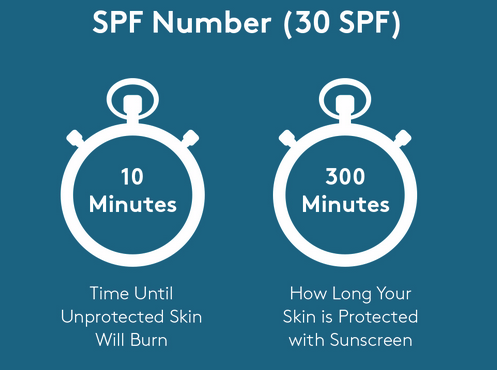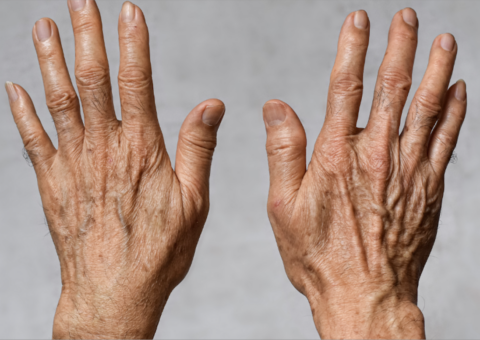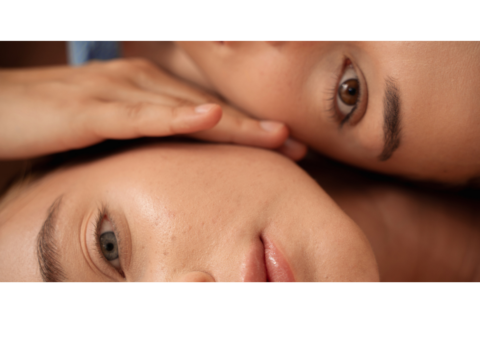Sunscreen is something I get asked about every day, typically multiple times a day. And while it is quick to rattle off my sunscreen recommendations for a particular patient, it is not so quick to explain what ‘good’ sunscreen habits look like and why.
So here it is: the Sunscreen lowdown:
![]() FACT #1: It’s a numbers game.
FACT #1: It’s a numbers game.
The SPF (Sun Protection Factor) of a sunscreen is telling you how well your sunscreen protects you from UVB rays only – the rays which cause sunburn. So if your skin would normally burn after 10 minutes in the sun, applying an SPF 30 sunscreen would allow you to stay in the sun without burning for approximately 300 minutes (so 30 times longer).

Caution: This is a rough estimate that depends on your skin type, how strong the sunlight is, what’s underneath you (sand? snow?), what’s above you (clear sky? clouds?), whether you have slopped on enough sunscreen as well as whether you have been sweating or swimming. Oh and there’s that little known fact that chemical sunscreens start to degrade as they are ‘used up’. So DO NOT CONVERT THE EQUATION ABOVE INTO THIS!

Sadly, it does not work like this.
![]() FACT #2: The numbers can be really confusing.
FACT #2: The numbers can be really confusing.
Traditionally, higher numbers are better in life – like school marks or cricket scores. So although you reach for the SPF 30, you might still get the urge to reach for an SPF 100. After all, if SPF 30 is good, shouldn’t SPF 100 be better?
Not exactly.
Unfortunately for us, the SPF scale is not linear. Meaning, higher numbers do not automatically mean more protection.
For example, SPF 100 is not actually twice as strong as SPF 50. In fact, anything above SPF 30 provides very little additional protection.
- SPF 15 blocks 93% of UVB rays
- SPF 30 blocks 96.7% of UVB rays
- SPF 50 blocks 98% of UVB rays

![]() FACT #3: Here’s another important number: 2g/cm2.
FACT #3: Here’s another important number: 2g/cm2.
This number is the amount of sunscreen used in clinical trials to establish a product’s SPF. This means applying two tablespoons or a shotglass of sunscreen to exposed parts of the body every time you’re enjoying some sunshine. Let’s be honest: Who does that? A big 200ml tube of sunscreen would last around 7 applications only. That’s a LOT of sunscreen.

![]() FACT #4: Dermatologists still recommend an SPF of 50 ideally
FACT #4: Dermatologists still recommend an SPF of 50 ideally
Why? Because people do not apply the improbable 2g/cm2 amount, your SPF30 is not really giving you the protection you think it is. In fact, if you apply only half the recommended amount of sunscreen, you don’t get half the protection. You get the square root of the SPF. So half the application of SPF 30 isn’t SPF 15, it’s SPF 5. Is your head spinning yet? If it’s any consolation, mine is too.
A tip: When applying sunscreen, apply it TWICE. Sunscreen application is a bit like painting – your first coat is going to look a bit patchy, so it’s worth applying a second coat for better coverage.
![]() FACT #5: Sunscreen needs to be reapplied frequently
FACT #5: Sunscreen needs to be reapplied frequently
I recommend reapplying your sunscreen every two hours when in direct sunlight. If you’re indoors, you can reapply every 4 hours.
![]() FACT #6: UVA protection is just as important as your SPF
FACT #6: UVA protection is just as important as your SPF
There is no point protecting yourself from UVB “sunburn” rays but allowing the equally damaging UVA rays through. In South Africa, the CANSA endorsement means that the sunscreen complies with the European Colipa standards: the international gold standard for UV testing. You can rest assured that there is good UVA coverage with our SA CANSA-endorsed sunscreens.

Note: As a generalization, products from the EU are subjected to stricter regulations when it comes to both SPF testing and ingredient safety than in the US. A study found that US sunscreens allowed an average of 3 x the UVA rays to pass through the skin as compared to those sold in Europe. So be wary of the US “Broad Spectrum” claims.

![]() FACT #7: There is a lot of hype around the chemicals in sunscreen – for a reason!
FACT #7: There is a lot of hype around the chemicals in sunscreen – for a reason!
OK, so this is a biggie and needs its own headline to understand the nitty-gritty behind the sunscreen ‘skandaal’ currently happening. But let’s cover the basics: There are two different types of sunscreens:
Chemical (or organic) sunscreens contain filters which absorb the UV rays and then convert and give this energy back out as heat. These are the ones in the red/ orange categories when it comes to sunscreen toxicity ratings below.
Physical (or mineral) sunscreens on the other hand, just sit on the surface of the skin and reflect the sun’s rays away from the skin. These contain zinc oxide or titanium dioxide as their active ingredients and sit in the reassuring green category.
If you don’t want your sunscreen absorbed into your body where it acts as an endocrine disruptor (confusing your body into thinking it is oestrogen), rather reach for a physical sunscreen. Bonus – physical sunscreens don’t degrade over time! Also, here are some more numbers which might compel you to ditch your regular sunscreen and switch to a physical sunscreen: 25% of chemical sunscreen filters applied to the skin is washed off within 20 minutes of swimming releasing up to 6000 tons of damaging sunscreen into coral reefs around the globe each year. Physical sunscreens, on the other hand, are reef safe. As with most things in life: when it comes to sunscreens: Go for Green!

![]() FACT #8: Timing is important when it comes to sunscreen
FACT #8: Timing is important when it comes to sunscreen
This is true on two fronts:
When to apply sunscreen in your daily skincare regimen. A chemical sunscreen must be applied under your daily moisturizer to allow for it to penetrate the skin effectively. A physical sunscreen must be applied last so that it sits as a shield on the skin.

How long before going outside must I apply my sunscreen? A chemical sunscreen needs to be applied 20 minutes before sun exposure and you need to wait at least 10 minutes before getting dressed to allow it to dry and penetrate into the skin. This is because when you apply sunscreen on to your skin, some of the product evaporates leaving a thin layer of UV filters on the skin. Think of it as wet paint which needs to dry. This process takes around 20 minutes and if you rub your skin or put on clothes, the process will be disrupted. The good news for the impulsive and impatient (or simply practical): with physical sunscreens it’s a straightforward matter of slapping it on and you’re good to go.

![]() FACT #9: Sunscreen needs to be applied every single day, 365 days of the year
FACT #9: Sunscreen needs to be applied every single day, 365 days of the year
When I answer this question the Berenstain Bear book “ Inside, outside, upside down” keeps popping into my mind. Outside is obvious: even those patients of mine who claim to live the ‘vampire lifestyle’ will get incidental UV exposure: when driving, sitting outside at a restaurant or when popping into the shops…Even when it is cloudy, up to 80% of the sun’s rays will hit your skin. But inside? This is less intuitive. The first thing to know is that cancer-causing UVA rays penetrate through windows. But secondly, we now know that blue light from computers and cell phones can also contribute to pigmentation and wrinkles (yes, our Netflix bingeing, Zoom calls and Face-timing are ageing us!).

![]() FACT #10: The ‘best’ sunscreen to buy is the one which you will actually use
FACT #10: The ‘best’ sunscreen to buy is the one which you will actually use

Ultimately, the best sunscreen is the one that you will actually use. But if you are already a die-hard sunscreen believer and don’t need to be convinced that sunscreen can save your skin then my top sunscreen pick is a non-nano zinc mineral or physical sunscreen. I also recommend avoiding spray sunscreens. Chemicals on your skin is one thing. Chemicals or even zinc particles in your lungs and in our environment is another thing altogether. If you go for a chemical filter, read the ingredient label and look for Tinosorb or Mexoryl as the safest chemical options. Also don’t forget to check the safety of the inactive ingredients. The Environmental Working Group’s Skindeep database (https://www.ewg.org/skindeep/) is an amazing resource on ingredient safety to bookmark.
![]() The Bottom Line
The Bottom Line
The bottom line is that living in South Africa means getting used to wearing lots of sunscreen. Choose carefully and apply religiously. And don’t forget about protective clothing, wide brimmed hats and trying to stay out of the sun between 10am and 3pm. Enjoy our beautiful sunny climate, but enjoy it safely.








